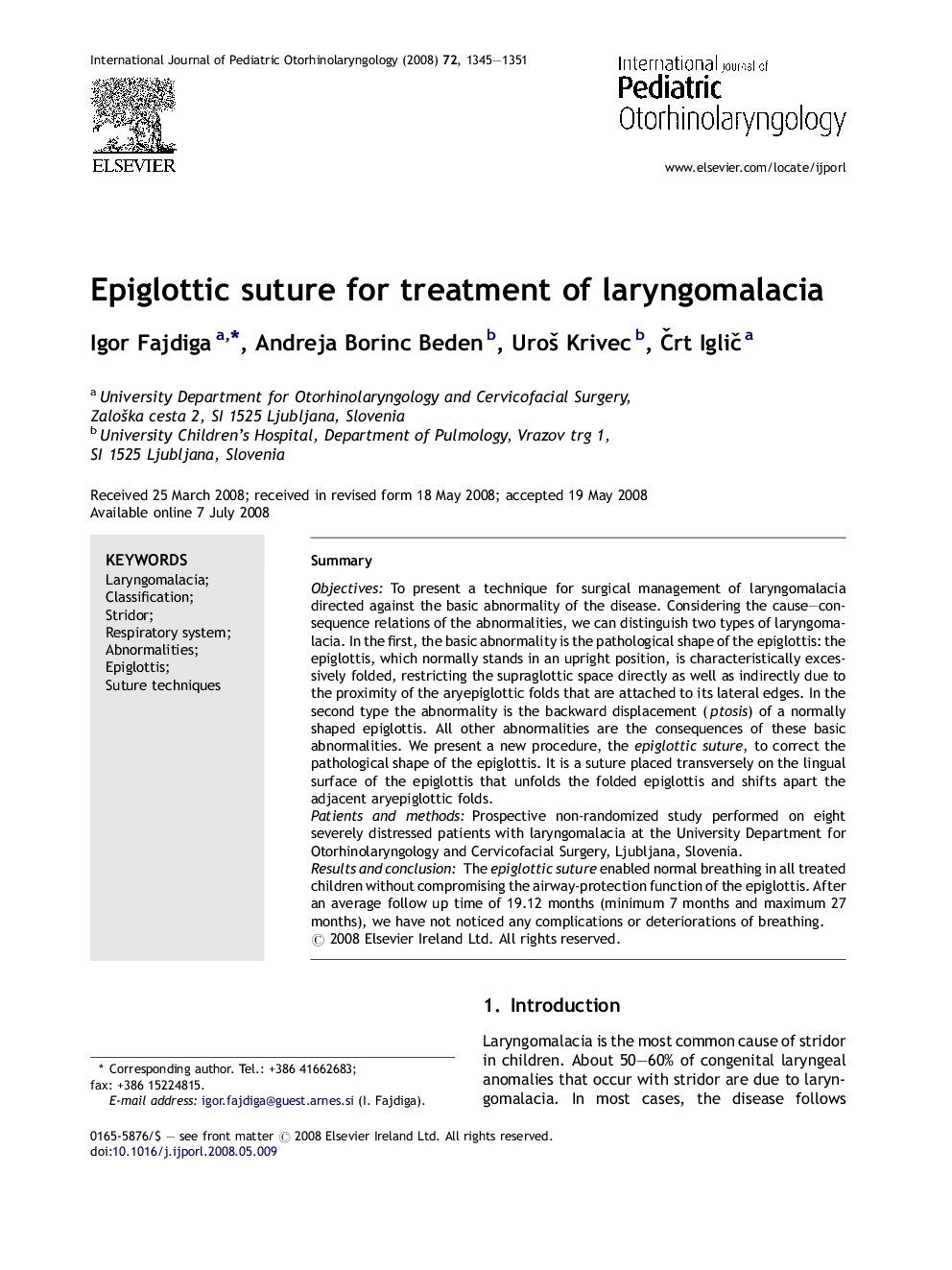| Article ID | Journal | Published Year | Pages | File Type |
|---|---|---|---|---|
| 4114535 | International Journal of Pediatric Otorhinolaryngology | 2008 | 7 Pages |
SummaryObjectivesTo present a technique for surgical management of laryngomalacia directed against the basic abnormality of the disease. Considering the cause–consequence relations of the abnormalities, we can distinguish two types of laryngomalacia. In the first, the basic abnormality is the pathological shape of the epiglottis: the epiglottis, which normally stands in an upright position, is characteristically excessively folded, restricting the supraglottic space directly as well as indirectly due to the proximity of the aryepiglottic folds that are attached to its lateral edges. In the second type the abnormality is the backward displacement (ptosis) of a normally shaped epiglottis. All other abnormalities are the consequences of these basic abnormalities. We present a new procedure, the epiglottic suture, to correct the pathological shape of the epiglottis. It is a suture placed transversely on the lingual surface of the epiglottis that unfolds the folded epiglottis and shifts apart the adjacent aryepiglottic folds.Patients and methodsProspective non-randomized study performed on eight severely distressed patients with laryngomalacia at the University Department for Otorhinolaryngology and Cervicofacial Surgery, Ljubljana, Slovenia.Results and conclusionThe epiglottic suture enabled normal breathing in all treated children without compromising the airway-protection function of the epiglottis. After an average follow up time of 19.12 months (minimum 7 months and maximum 27 months), we have not noticed any complications or deteriorations of breathing.
